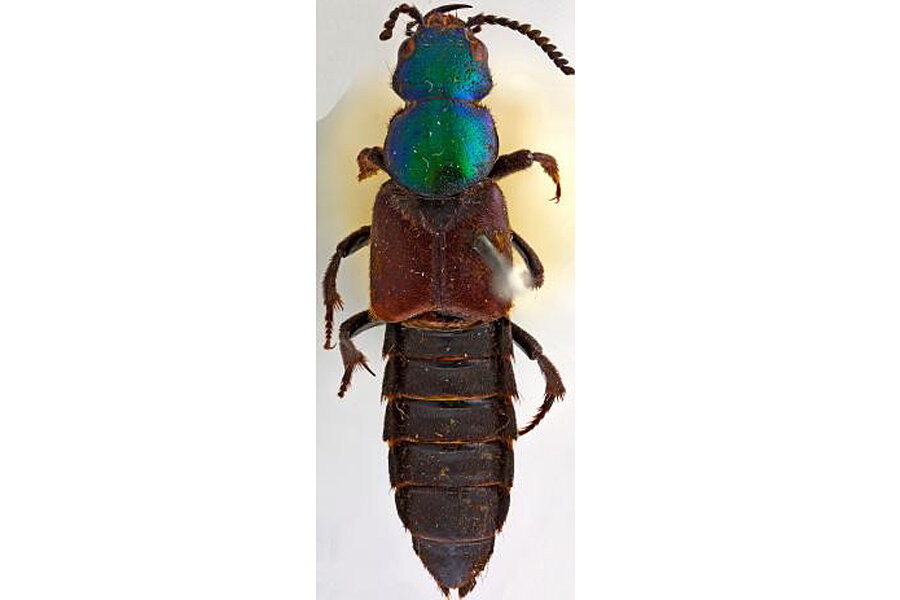For Darwin Day, an unexpected hybrid
Loading...
What do biologist Charles Darwin and humorist David Sedaris have in common? Mr. Darwin's theory of natural selection upended the human worldview by suggesting that we are just another form of animal. Mr. Sedaris' pet theories that "men with beards have guns" and "straight men would never share dessert" were upended over the course of his last book tour, which allowed him to conduct extensive polling as he signed copies of Let's Explore Diabetes with Owls.
Now, for Darwin's 205th birthday, an entomologist's whim has irreversibly bound the two men together in the same long-bodied beetle, newly named Darwinilus sedarisi.
Over the last several years Stylianos Chatzimanolis, an entomologist at the University of Tennessee at Chatanooga, listened to scores of Sedaris' audiobooks as he toiled over an updated key to the rove beetle subtribe Xanthopygina, a large and colorful lineage of subtropical crawlers. When the surprisingly serrated antennae of a lustrous, inch-long bug caught his eye, he took a closer look and found that it bore the distinctive yellowed label pinned to animals which Darwin himself captured.
This specimen, which had been reported as lost in a 1987 paper, showed up amid a motley crew of other "undescribed" beetles Dr. Chatzimanolis had borrowed from the London Museum of Natural History.
"We are not quite sure where it belongs in the tree of life," says Chatzimanolis, and it is unknown whether the species survives today or is extinct. Environmental clues are scarce, he says, because the Argentine habitats where it lived during Darwin's visits have long since been turned over to agriculture.
Still, "[i]t is rather remarkable that only two specimens are known for such a large species," he reported in the open-access journal ZooKeys. "One explanation might be that this species lives in refuse piles of ants or other Hymenoptera."
Darwinilus sedarisi, he says, bears a resemblance to other subtropical, trash-pillaging beetles.
"The ants, on the side of their nests, dispose of all the items they don't need," he explains. "This is a very rich nutrient source for other insects," including fly mothers with larvae to deposit. Certain beetles live off of these larvae, and Darwinilus sedarisi's head and front legs "are indicative of such a particular lifestyle," he says.
It's hard to overlook a certain parallel with the labor of the human Sedaris, who draws his comedic sustenance from many of life's grottiest and least elegant moments. Chatzimanolis says Let's Explore Diabetes with Owls rang a particular bell with his work. "There were several natural history moments," he says.









